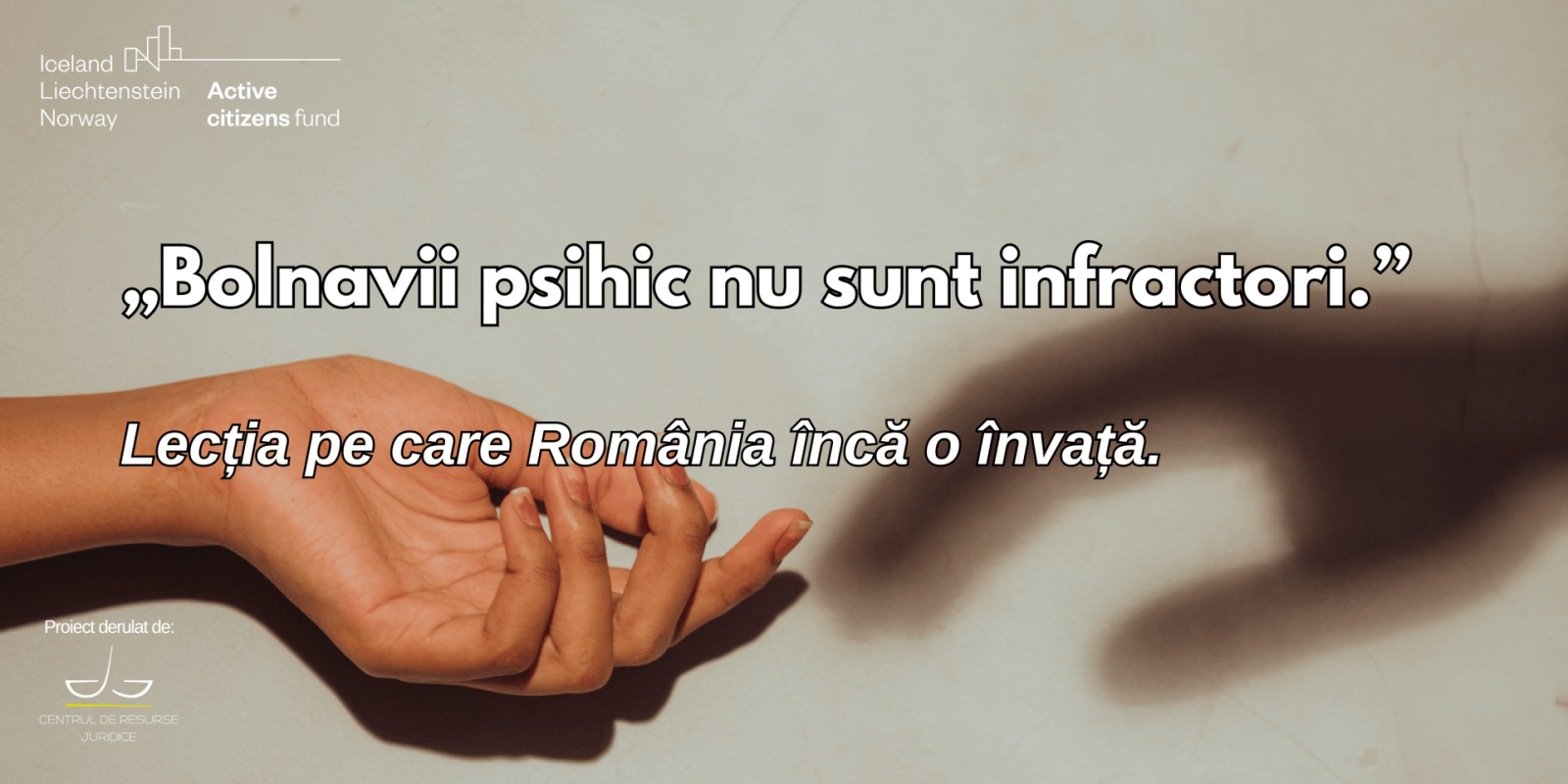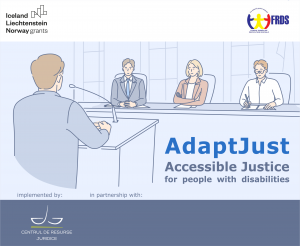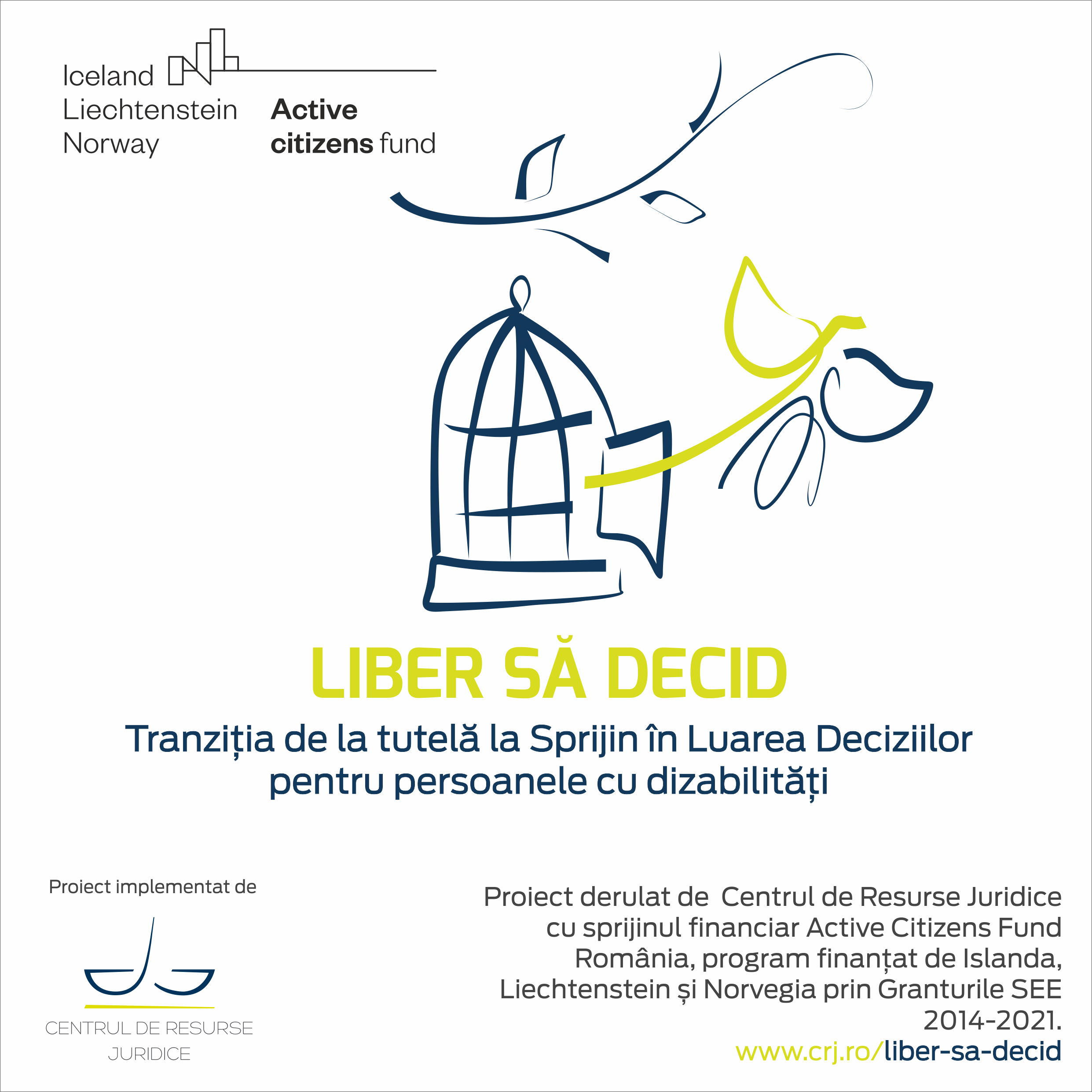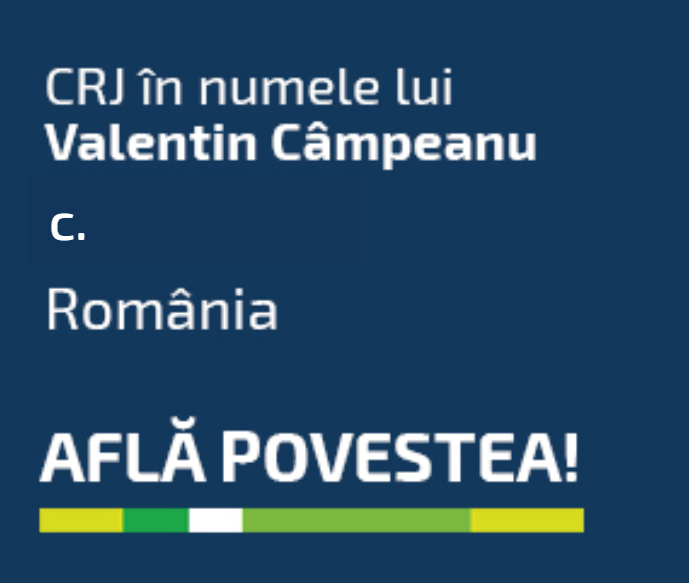In 2020, the newspaper Libertatea started a journalistic investigation consisting of several articles, one of which was entitled “Mentally ill people are not criminals”. At first glance this sentence seems no more than a trite truth. The shock comes when we learn that this is how the paragraph (2) of Art. 50 of the Manual of Good Intervention Practice for Public Order Police Officers[1] begins. If such a document must contain such a reference, we conclude that, at least in the view of the authority that approved this act, we are not in the presence of a truism, but of a lesson that must nevertheless be taught.
Of course, we must bear in mind that this manual was drawn up in 2005, in the context of Romania’s accession to the European Union. The natural expectation would be that such a mention would now be obsolete. However, the subject of the above-mentioned investigation is the case of a 37-year-old man who died on 22 April 2020 following an intervention by the police in the hallway of the block in which he lived, involving 7 policemen and 2 gendarmes, which ended with 6 shots, 5 of which hit him in the back. From published press articles[2] it appears that the police and gendarmerie team intervened following a call to 112 reporting that the man was in a strange state, the term “depression” is used, with the mention that he did not know if he was diagnosed. The intervening police forces reportedly tried to restrain him, but because the man was allegedly holding a nail or a wire, and they feared they would be injured, the man managed to flee up the stairs, trying to escape. This would have been the reason why one of the police officers felt the use of a weapon was necessary.
A year later, another case in Pitesti drew attention to the way the police intervened after IPJ Arges announced that “during the intervention at a fire at a premises (electrical appliances), a man consuming alcoholic beverages at a table refused to leave the premises. The man was summoned, and as a result of the fact that he did not obey the instructions and was recalcitrant, he was evacuated. The man went into cardio-respiratory arrest.“[3] In a press conference on the case, a senior forensic doctor stated that “the autopsy found that the death was violent, due to polytrauma. And the immediate cause of death was mechanical asphyxia. The mechanical asphyxia was due to cervical trauma and thoracic trauma”[4].
Two years later, another case appears and is intensely publicized[5], that of a young man who on the night of 18 September 2023 arrived at the emergency room of the University Emergency Hospital handcuffed, with multiple wounds and traumas and who after about a week in a coma died. The police officers who accompanied him to the hospital reportedly intervened following a 112 call reporting the presence of the man on the street, scantily dressed, behaving unusually, presumed to be caused by the consumption of prohibited substances. According to media images from the body cameras of the police officers who participated in the intervention, the restraint and handcuffing of the young man involved the use of tear spray, tonfa and the turning off for a period of time of the body cameras recording the intervention. Following the media coverage of the case, IGPR organised a press conference[6] which provided a series of explanations on what happened, with the mention that there are several ongoing investigations that will clarify what happened.
Of course, looking at the three cases presented, one could argue that they have nothing in common, as they are about different people, from different backgrounds, different interventions by law enforcement, generated by different reasons. The first case involved a man alleged to be mentally ill, the second involved an elderly person alleged to have been drunk, and the third case was about a young man alleged to have taken drugs. However, no matter how different the cases are, what they have in common is the manner in which the police intervention was carried out, the weapons and techniques used and the fact that although in all cases the initial intention was to restrain the person and take him to hospital or the police station, the consequence was death. We do not intend to make judgements on each individual case, to speculate on the causes of death or on the persons responsible, not only because the investigations of the criminal investigation bodies are ongoing, but also because we do not wish to set ourselves up as judges or prosecutors, which is not the purpose of this material.
However, it is impossible for the above examples (as they are not the only recent cases of this type) not to remind us that Romania has been condemned on numerous occasions by the European Court of Human Rights for violating Article 2 of the Convention – the right to life – or Article 3 of the Convention – the prohibition of torture in similar situations, where, as a result of interventions by the police or other law enforcement agencies, people have died or their lives have been endangered or they have suffered inhuman and degrading treatment.
In relation to police treatment of citizens, one of the ECHR cases that has generated discussion on the need for general measures to prevent similar situations from recurring is Barbu Anghelescu v. Romania[7], where the Court ruled that Article 3 of the Convention was violated because of the degrading treatment of the applicant on 15 April 1996 by police officers and the failure of the authorities to conduct an effective investigation into this treatment. The judgment was handed down in October 2004 and subsequently monitored by the Court’s Department for the Execution of Judgments. The case of Barbu Anghelescu v.
Romania was considered as a pilot judgment for a further 56 repetitive cases[8], all of which were supervised together as long as they required similar general measures and Romania was obliged to submit a joint action plan.
In June 2016, the Committee of Ministers of the Council of Europe decided to close the procedure for monitoring the implementation of the obligations resulting from this group of judgments, after the Romanian Government had submitted an action plan and a series of action reports[9] since 2013, in which they considered that they had demonstrated the reorganisation of police activities and the adaptation of the regulatory acts in order to prevent similar situations.
While Romania claimed that it had drawn up an action plan and implemented the measures proposed therein so as to prevent the repetition of cases such as the 56 cases that were grouped together with Barbu Anghelescu v. Romania, in 2011 it was again condemned at the ECHR in the case of Soare and Others v. Romania[10] for events that took place in 2000, starting from a police intervention that involved the use of firearms and the serious injury of the first applicant, who ended up in hospital with a serious cranio-cerebral trauma, as a result of which he did not fully recover, being discharged after about half a year half paralysed. In this case, the Court held that there had been a substantive and procedural violation of Article 2 of the Convention in respect of the first applicant, as the State had not shown that the potentially lethal force used against the first applicant did not exceed what was “absolutely necessary”, that it was strictly “proportionate” and pursued one of the aims authorised by Article 2 § 2. In addition, the Court also held that there had been a violation of Article 13 in conjunction with Article 2 of the Convention in respect of the first applicant, taking into account that the evidence submitted was sufficient for it to find that the proceedings relating to the incident of 19 May 2000 could not be regarded as a prompt and effective investigation. The Court also held that there had been a violation of Article 3 of the Convention in respect of the second and third applicants as a result of the fact that they had stayed at the police station without food or water.
The Soare and Others v. Romania case was also considered as a pilot judgment for 6 other repetitive cases[11], all of which were jointly supervised as long as they required similar general measures and Romania was obliged to submit a joint action plan.
In the latest decision of the Committee of Ministers of the Council of Europe of June 2021[12] “(…) it notes the sustained efforts made by the authorities to bring the legislative framework governing the use of potentially lethal force by the police into line with the requirements of Article 2 of the Convention as set out in these decisions; further recalled their conclusions that the regulations adopted in 2009 on the operation of special intervention units appeared capable of ensuring that their deployment is adequately justified” and called on the Romanian authorities “to ensure promptly that the law restricts the use of firearms by law enforcement officers in all cases to situations where this is absolutely necessary to prevent a risk to life and to take appropriate measures to ensure that law enforcement operations, including those involving special intervention units, are planned and directed so as to avoid, as far as possible, the use of potentially lethal force;”.
This decision was taken despite the fact that the Romanian authorities had communicated a material[13] in which they stated that “with regard to general measures, the Government is of the opinion that the information provided in this revised action plan shows that the national authorities have continued to adopt and implement relevant measures to regulate the use of firearms by State agents (Police, but also Gendarmerie and Border Police) in order to prevent, as far as possible, loss of life or injury to persons. The effectiveness of such measures is illustrated by the fact that, as shown above, from 2017 until today, there have been a limited number of incidents in which the use of firearms by law enforcement officers has unfortunately resulted in loss of life.” In support of this request, the Romanian authorities indicated that:
- “by Law No. 192/2019, a series of measures were approved leading to an increase in the intervention capacity of the national authorities in the field of public order and safety (…);
- Thus, Law 218/2002 on the organisation and functioning of the Romanian Police has been amended by introducing rules on the use of means of restraint, and the use of these means is subject to the principles of necessity, gradualness and proportionality. In this way, it is possible for everyone, including citizens, to know the methods, procedures and, in general, the conditions under which the police act, and in this case, the police use the standard of the “continuum of force” or “pyramid of danger”;
- Thus, the law lists several means of restraint, such as the use of physical force, including the application of self-defence procedures or blows, the use of handcuffs or other appropriate means of restraint, the use of non-lethal means and the use of weapons, including firearms, etc.;
- It should also be noted that the law in question also lays down obligations regarding the professional training of police officers in the use of force, taking into account certain considerations of the European Court of Human Rights invoked in cases concerning the use of firearms. In this context, IGPR refers to the conclusions reached by the ECHR in cases where it has expressed criticism of the training of personnel who have used firearms (McCann and others v. the United Kingdom, including Soare and others v. Romania), in which context it was considered useful and necessary to introduce a rule establishing the obligation to train police officers in the use of firearms”.
In August 2022, Romania was again condemned at the ECHR for violation of Article 2 of the Convention, both substantively and procedurally, in the case of Pârvu v. Romania[14] for an intervention by police officers (armed but dressed in civilian clothes, with vehicles not bearing official police insignia) in 2009, as a result of which, by mistake, the applicant’s husband was shot in the head and was admitted to hospital in serious condition. The applicant, the victim’s wife, claims that she received no official information about her husband the following morning, only learning the news after the hospital spokesman told television reporters at the scene that the victim had died.
Following the judgment in Pârvu v. Romania, in a press release[15] entitled “Romania must ensure that allegations of excessive use of force during police operations are effectively investigated”, the Court draws attention to the fact that it has already made similar findings in three other cases against Romania, which have already been referred for enforcement to the Committee of Ministers of the Council of Europe, which is continuing to examine the general measures required in Romania to prevent the unjustified use of potentially lethal force during law enforcement interventions and to ensure the effectiveness of investigations into these incidents.
Of course, we can look at the ECHR judgments mentioned above and conclude that the facts for which Romania was condemned occurred in the 1990s and 2000s, so that the expectation might arise that they are no longer relevant today, especially as the Romanian authorities assured the Committee of Ministers in June 2021 that the general measures requested by the Court had been taken.
However, in the “statistics” presented by the Romanian authorities in 2021, according to which “from 2017 until today, there were a limited number of incidents in which the use of firearms by law enforcement officers unfortunately led to loss of life”, there is also the 37- year-old man who died on 22 April 2020 following an intervention by law enforcement officers in the hallway of the apartment block where he lived, after 6 bullets were fired at him, 5 of which hit him in the back. His death seems to be considered by the Romanian authorities as an incident in a limited number of incidents, an exceptional error which is not likely to change in any way the results communicated to the Committee of Ministers, all the more so as “on paper” the obligations have been fulfilled – the law has been adapted, there is a regulation on the professional training of police officers in the use of force as well as the training of police officers in the use of firearms.
However, beyond the form of the law and its current content, what seems to be lacking is the identification of concrete and effective ways to train the officers who are to apply it, so that their interventions do not generate inhuman or degrading treatment or violate the right to life of the persons they intervene against, whether they are persons with intellectual or psychosocial disabilities or persons under the influence of alcohol or other prohibited substances and whether they are “criminals” or not.
However, for the State to be able to ensure that it achieves these results, it would be necessary to shift the focus of attention from legislation to the training of professionals, with the mention that it is not enough to regulate the obligation to train, but it is necessary for this to happen in practice. If we look at the cases presented in the first part of this article, we can see that they share a common problem: the inadequate intervention of the law enforcement. However, in order to determine whether or not we are in the presence of an inadequate intervention, the question that arises is “how, in concrete terms, should a police officer act in such a situation?” and, at the same time, “are police officers properly trained to know how to act in such a situation?”
The first question is answered in an article published in April 2021 on the website of the European Police Officers’ Union – Europol[16], in which attention is drawn to the fact that “at the level of the Romanian Police there is no operational/system procedure that expressly establishes the activities to be carried out in the case of interventions with this category of persons, with strict reference to the procedure for transport to a psychiatric hospital” and that “the EUROPOL trade union has asked the Ministry of Interior to set up a working group with a view to drawing up a procedure as soon as possible, in order to concretely establish the responsibilities of each institution and the activities to be carried out when police officers intervene with mentally ill persons.”
The newspaper Libertatea[17] also tried to find an answer to the second question, but the sources consulted by the journalists revealed that very little and very rarely training is done, even though the agents consider that they need weekly training in this regard.
In conclusion of the above, we note a dissonance between the communications that the Romanian authorities send to the Committee of Ministers in order to prove the fulfilment of the obligations to take general measures for the execution of the ECHR judgments and the real situation, proven by the multiple documented cases, at least in the media.
Thus, it seems that some 20 years after the development of the manual of good intervention practices for public order police officers, Romania is still learning that persons with disabilities are not criminals, just as persons under the influence of alcohol or other prohibited substances are not criminals, and is still practising ways of intervening with them in emergency situations.
Author: lawyer Irina Mihale
- Document approved by the General Inspector of the Romanian Police No. 643/2005, published on apador.org, URL : http://www.apador.org/wp-content/uploads/2017/12/manual- practici-politie.pdf, accessed on 12.01.2024. The document was published by APADOR-CH on its own website after having obtained it from the Romanian Police following the winning of a dispute based on a request for disclosure of this document under Law no. 544/2001. We do not know if this document has been modified since 2018 until now.
- URL:www.libertatea.ro/stiri/reconstituirea-noptii-in-care-alexandru-gazdac-a- murit-impuscat-de-politist-4248845 accessed on 12.01.2024;
- URL:www.stiridiaspora.ro/scene-socante-in-romania-patru-politisti-au-sarit-pe-un- batran-iar-acesta-a-murit-la-scurt-timp-s-a-deschis-dosar-penal_466039.html accessed on 12.01.2024;
- URL:https://jurnaluldearges.ro/update-declaratiile-medicului-legist-si-concluziile- autopsiei-in-cazul-barbatului-pus-la-pamant-de-politisti-125992/ accessed on 12.01.2024;
- URL:https://stirileprotv.ro/stiri/actualitate/momentul-incatusarii-lui-eduard-giosu- tanarul-drogat-care-si-a-facut-rau-singur-lovindu-se-de-o-masina-parcata-video.html, accessed on 12.01.2024 ;
- URL:www.antena3.ro/emisiuni/news-hour-with-cnn/politia-romana-explicatii-moarte- eduard-giosu-687976.html, accessed on 12.01.2024
- URL: https://hudoc.echr.coe.int/?i=001-122715 accessed on 12.01.2024;
- URL: https://hudoc.exec.coe.int/eng?i=004-17496 accessed on 12.01.2024;
- URL: https://hudoc.exec.coe.int/eng?i=004-17496 accessed on 12.01.2024
- URL: https://hudoc.echr.coe.int/?i=001-123314 accessed on 12.01.2024;
- URL: https://hudoc.exec.coe.int/?i=004-12812 accessed on 12.01.2024;
- URL: https://hudoc.exec.coe.int/?i=004-12812 accessed on 12.01.2024;
- URL: https://hudoc.exec.coe.int/?i=DH-DD(2021)403E accessed 12.01.2024
- URL:http://ier.gov.ro/wp-content/uploads/2023/02/Parvu-impotriva-Romaniei-1.pdf accessed on 12.01.2024;
- URL: https://hudoc.echr.coe.int/fre?i=003-7414827-10148881 accessed on 12.01.2024
- URL:https://sindicateuropol.ro/mai-lasa-politistii-fara-procedura-pentru-bolnavii- psihic/ accessed on 12.01.2024;
- URL:www.libertatea.ro/stiri/interventia-agentilor-in-cazul-lui-alexandru-gazdac- impuscat-in-bucuresti-4251122 accessed on 12.01.2024.






